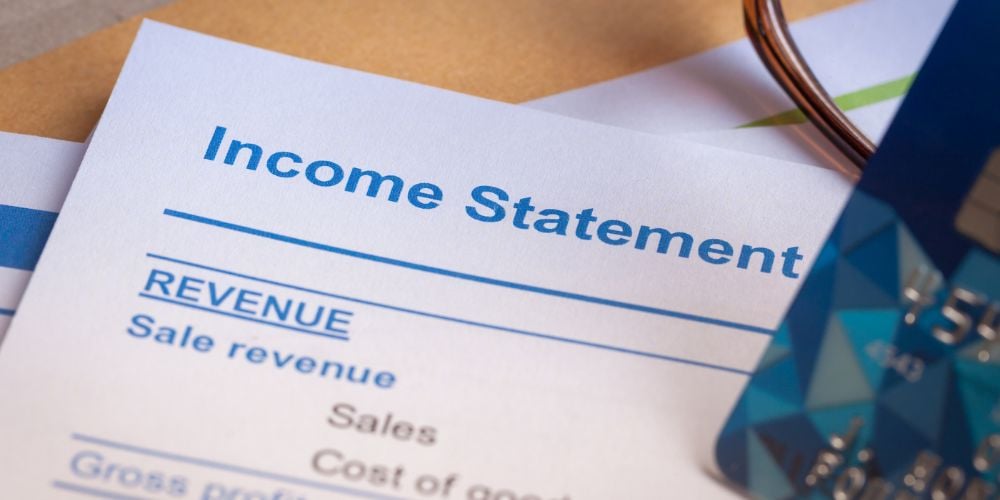When businesses record their financial transactions, they must follow specific rules. One area that often confuses both new and seasoned business owners alike is the treatment of unearned revenue.
This article aims to clarify does unearned revenue go on the income statement and how it impacts financial reporting.
Understanding Unearned Revenue
Unearned revenue refers to money received by a business for goods or services yet to be provided. It might seem simple, but its accounting treatment is quite particular.
For example, a software company receives payment for a yearly subscription upfront. This payment is unearned until the company delivers the software services over the year.
Another prime example of unearned revenue can be seen in magazine subscriptions. When subscribers pay upfront for a year’s worth of magazines, this payment constitutes unearned revenue until the magazines are actually delivered each month.
Unearned revenue is seen as a liability. This is because it represents a future obligation. The business must either deliver the product or service or refund the money.
This aspect underscores why unearned revenue does not appear as an asset. Although it involves the receipt of money, it carries an obligation to act in the future.

Does Unearned Revenue Go on the Income Statement? Truth Reveals
A common question is whether unearned revenue appears directly on the income statement. It does not. The income statement captures revenues earned and expenses incurred over a period.
Unearned revenue enters the accounting equation as a liability. It becomes part of the income statement only when the business recognizes it as earned revenue.
The transfer of unearned revenue to earned revenue happens over time. As the business delivers goods or services, it gradually recognizes revenue. This systematic transfer impacts the income statement across multiple reporting periods.
The Role of Revenue Recognition in Reporting
The process of recognizing revenue from unearned revenue is crucial. Companies follow the revenue recognition principle. This principle dictates that revenue is recognized when earned, regardless of when the payment was received.
This method keeps the income statement reflective of the actual earnings and expenses within a period.
The accurate recognition of revenue ensures the income statement serves its purpose. It provides a clear snapshot of a company’s performance over a specific period. Incorrectly recognized revenue can distort this picture, leading to poor decision-making.
How do You Account for Unearned Revenue?
Accounting for unearned revenue is inherently unique because even though it’s money in the bank, it’s not yet your earnings. This is why it’s listed as a liability in accounting books rather than revenue.
The recognition of unearned revenue is contingent upon the accounting method employed.
For businesses using the accrual accounting method, revenue is recategorized from unearned to earned progressively as goods or services are provided, irrespective of the timing of cash flows.
Impact of Unearned Revenue Recognition on Financial Reporting
Ensuring Accurate Financial Portraits
The recognition of unearned revenue has a profound impact on financial reporting. When done correctly, it stretches beyond compliance. It breeds trust and reliability in financial statements. Investors, creditors, and regulators rely on these documents to make informed decisions.
The act of transforming unearned revenue to earned revenue in alignment with the delivery of goods and services ensures that financial statements accurately portray a company’s operations.
It aligns reported revenue with actual business activities, providing stakeholders with a true understanding of company performance.
The Perils of Misrecognition
The misrecognition of unearned revenue introduces several risks. Prematurely moving unearned revenue to earned revenue on the income statement can inflate income figures. This might attract investment under false pretenses, setting up companies for future scrutiny and possible legal consequences.
Conversely, delaying the recognition of earned revenue can unfairly diminish a company’s apparent success, potentially affecting stock prices, investor confidence, and creditworthiness.
This balance is delicate and critical, emphasizing the importance of adhering to recognized accounting principles.
Regulatory Bodies and Standards
To guide companies in accurately reporting unearned revenue, regulatory bodies like the Financial Accounting Standards Board (FASB) in the United States provide standards and frameworks.
The introduction of the ASC 606 by FASB created a more standardized approach to revenue recognition. It helps ensure that regardless of industry, companies recognize revenue in a manner that accurately reflects their business dealings.
Compliance with such standards is not merely a legal obligation. It serves as a testament to a company’s commitment to transparency and accuracy in financial reporting.
This commitment plays a significant role in maintaining a healthy relationship with stakeholders and the market at large.

Advanced Considerations in Unearned Revenue
The Ripple Effect on Financial Ratios and Analysis
Unearned revenue influences several financial ratios, particularly those measuring liquidity, as it is classed as a current liability.
Conforming to Revenue Recognition Norms
New revenue recognition standards, specifically IFRS 15 and ASC 606, focus on performance obligations and have vast implications for unearned revenue accounting.
Companies ought to be meticulous in applying these norms, ensuring the systematic recognition of revenue as performance obligations are fulfilled.
Frequently Asked Questions
Why is unearned revenue a liability and not an asset?
Unearned revenue represents future obligations, not assets the company controls. It reflects the company’s duty to provide goods or services or to return the funds.
Is Immediate Recognition of Unearned Revenue Possible?
Typically, unearned revenue cannot be recognized as income until the associated goods or services have been delivered.
How does unearned revenue move to the income statement?
As the company provides goods or services, it recognizes part of the unearned revenue as earned. This earned amount then appears on the income statement as revenue.
Is unearned revenue considered cash flow?
Unearned revenue affects cash flow but does not appear on the cash flow statement until recognized as revenue. Initially, it increases cash but sits as a liability on the balance sheet.
Conclusion
This guide has traversed the concept of unearned revenue and its place in financial accounting. We’ve learned that unearned revenue does not directly feature on the income statement.
Instead, it impacts the statement over time as it transitions into earned revenue. Proper recognition of unearned revenue ensures accurate financial reporting, reflecting the genuine financial performance of a business.
Understanding these principles helps businesses maintain clear and accurate accounts, crucial for managing expectations among investors, regulators, and other stakeholders.


 Tags:
Tags:










